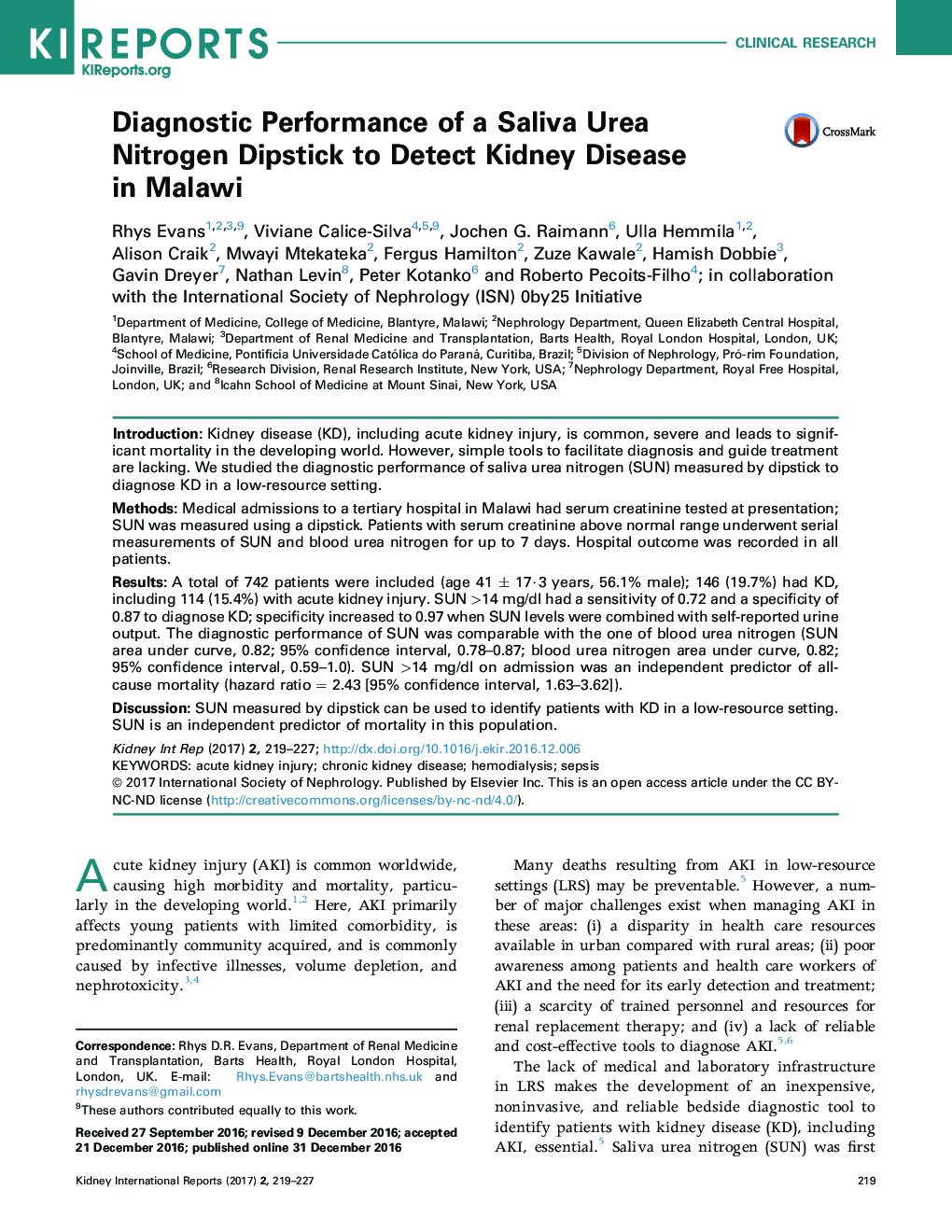| Article ID | Journal | Published Year | Pages | File Type |
|---|---|---|---|---|
| 5689564 | Kidney International Reports | 2017 | 9 Pages |
IntroductionKidney disease (KD), including acute kidney injury, is common, severe and leads to significant mortality in the developing world. However, simple tools to facilitate diagnosis and guide treatment are lacking. We studied the diagnostic performance of saliva urea nitrogen (SUN) measured by dipstick to diagnose KD in a low-resource setting.MethodsMedical admissions to a tertiary hospital in Malawi had serum creatinine tested at presentation; SUN was measured using a dipstick. Patients with serum creatinine above normal range underwent serial measurements of SUN and blood urea nitrogen for up to 7 days. Hospital outcome was recorded in all patients.ResultsA total of 742 patients were included (age 41 ± 17·3 years, 56.1% male); 146 (19.7%) had KD, including 114 (15.4%) with acute kidney injury. SUN >14 mg/dl had a sensitivity of 0.72 and a specificity of 0.87 to diagnose KD; specificity increased to 0.97 when SUN levels were combined with self-reported urine output. The diagnostic performance of SUN was comparable with the one of blood urea nitrogen (SUN area under curve, 0.82; 95% confidence interval, 0.78-0.87; blood urea nitrogen area under curve, 0.82; 95% confidence interval, 0.59-1.0). SUN >14 mg/dl on admission was an independent predictor of all-cause mortality (hazard ratio = 2.43 [95% confidence interval, 1.63-3.62]).DiscussionSUN measured by dipstick can be used to identify patients with KD in a low-resource setting. SUN is an independent predictor of mortality in this population.
